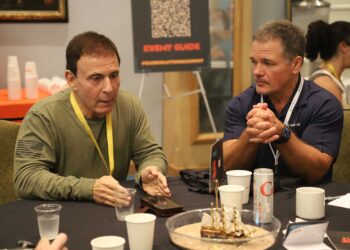A growing trend in the fitness industry is making health clubs more “green,” implementing technology or practices that reduce a facility’s energy consumption and carbon footprint.
For Jose Avina, the owner of Sacramento Eco Fitness, going green is a practice that can reap great dividends for any fitness center. The California-based club has found this to be the case through first-hand experience, after taking several measures to become eco-friendlier.
When making the switch to “green,” it’s important to choose equipment capable of harnessing energy that can ultimately be stored and put back into the grid. For Avina, that equipment was SportsArt’s ECO-POWR line. These “off-the-grid” machines break the convention of typical fitness equipment.
“All we have are [SportsArt’s] ECO-POWR cardio machines, which turn off automatically and don’t consume any energy when they’re not being used,” explained Avina. “The member is producing the watts they need to be able to power that machine. The faster the member goes, the more watts they can produce … Whatever is left over that someone doesn’t use goes directly back into the grid.”
According to Avina, the machines have been integral in lowering the club’s energy consumption and overall carbon footprint. However, he didn’t want to stop there. The next step was figuring out how to power larger portions of the facility with green energy.
First, they installed a battery that stores excess energy from the club’s indoor cycling machines. “But that wasn’t enough energy to actually power the building itself, so we went ahead and installed some solar panels that produce the energy we need so we can have an excess amount. [Now] we can power our fans, the sound system, the lights and anything else that needs to be powered — we can use that green energy.”
Avina said another benefit of these green practices is the effect its had on members, who feel empowered in knowing they’re having a positive impact on the environment.
“Our members become very active with what they’re doing, not only with their fitness programs, but they’ve now become more eco-conscious,” said Avina. “Education is one of the biggest things members are taking away from this.”
Ultimately, Avina hopes to one day be able to provide tangible perks to the club’s eco-practices, such as credits toward members’ taxes from the Sacramento Municipal Utility District. “If we can get to a better solution where we can sell the energy back and then the members can reduce their membership fees by working out because they’re producing the energy anyway, that’s the ultimate goal,” he said.
Going green might seem like a drastic change. After all, a lot of equipment replacement and facility changes would be necessary for clubs looking to go all-in with an eco-conscious facility — but Avina believes the end result would be well worth it.
And, he offered his help to any who wish to try. “Reach out to us,” Avina encouraged. “We’ve solved a lot of the current issues [with going green].” By Bobby Dyer
Stay ahead in the fitness industry with exclusive updates!
Bobby is the former assistant editor of Club Solutions Magazine.










